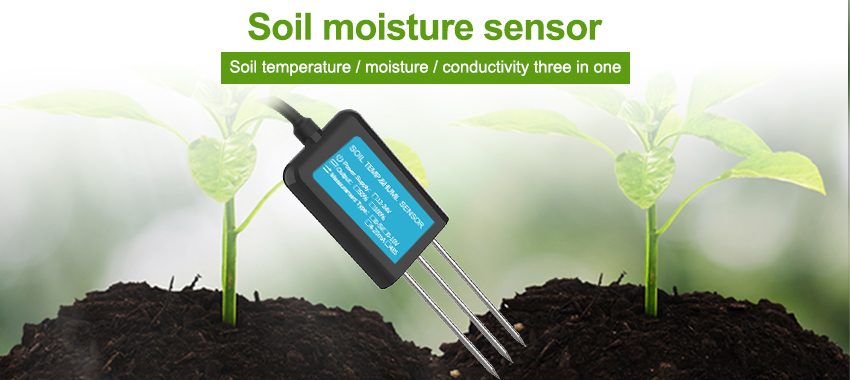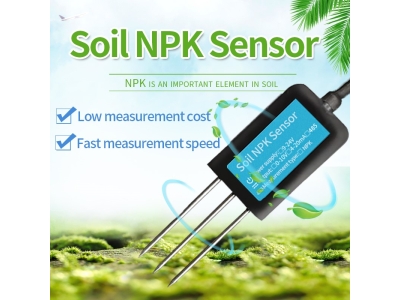Agriculture plays a critical role in global food production and sustainability. With the increasing demand for food due to population growth, farmers face the challenge of optimizing crop yield while minimizing environmental impacts. Soil health is a crucial factor in achieving these goals, as it directly influences crop growth and productivity. Soil sensors have emerged as powerful tools in modern agriculture, enabling farmers to monitor soil conditions in real-time and make data-driven decisions. This article explores the potential and benefits of soil sensors in improving crop yield and soil health.

Understanding Soil Health
Soil health refers to the capacity of soil to function as a living ecosystem capable of supporting plant growth, sustaining biodiversity, and providing ecosystem services. Healthy soil is characterized by its fertility, structure, nutrient content, water-holding capacity, and microbial activity. Monitoring and maintaining soil health are essential for sustainable agriculture and effective land management practices.
The Role of Soil Sensors
Soil sensors, also known as soil monitoring systems or probes, are devices that measure various soil parameters, including moisture content, temperature, pH levels, nutrient levels, and salinity. These sensors come in different forms, such as handheld devices, wireless nodes, or probes installed in the ground. They provide continuous, real-time data on soil conditions, allowing farmers to optimize irrigation, fertilizer application, and other farming practices.
Benefits of Soil Sensors in Agriculture
4.1. Precision Irrigation
One of the most significant advantages of soil sensors is their ability to optimize irrigation practices. By continuously monitoring soil moisture levels, farmers can determine the optimal timing and amount of water required by crops. This precision irrigation reduces water waste, prevents over-irrigation, and minimizes the risk of waterlogging, which can lead to root diseases and reduced crop yield.
4.2. Nutrient Management
Soil sensors can also measure nutrient levels, such as nitrogen, phosphorus, and potassium, in the soil. This information allows farmers to apply fertilizers precisely where and when they are needed, optimizing nutrient uptake by crops and reducing fertilizer waste. Proper nutrient management enhances crop health, minimizes environmental pollution, and promotes sustainable agriculture practices.
4.3. Soil pH and Salinity Monitoring
Soil pH and salinity levels significantly impact plant growth and productivity. Soil sensors provide farmers with real-time data on these parameters, enabling them to take corrective actions promptly. Adjusting pH levels or implementing appropriate soil amendments can create optimal growing conditions for crops. Similarly, monitoring salinity levels helps prevent soil degradation and ensures crops receive adequate water and nutrients.
4.4. Early Disease Detection
Some advanced soil sensors can detect changes in microbial activity and identify potential disease outbreaks in the soil. By monitoring microbial activity, farmers can detect early signs of pathogens or imbalances in the soil microbiome. This early detection allows for timely intervention, preventing the spread of diseases and minimizing crop losses.
Integration with Farm Management Systems
Soil sensors can be integrated into farm management systems, leveraging data analytics and automation. By connecting soil sensors with other agricultural technologies, such as weather stations and crop modeling software, farmers can make informed decisions and automate certain farming processes. This integration improves efficiency, reduces manual labor, and maximizes the benefits derived from soil sensor data.
Challenges and Future Prospects
6.1. Cost and Accessibility
One of the main challenges associated with soil sensors is their cost and accessibility for small-scale farmers. While prices have reduced over time, further efforts are needed to make these technologies affordable and accessible to farmers globally. Governments, research institutions, and private companies can collaborate to develop cost-effective solutions and promote their adoption.
6.2. Data Interpretation
Interpreting soil sensor data and translating it into actionable insights can be a challenge, particularly for farmers without advanced technical knowledge. User-friendly interfaces, data visualization tools, and educational programs can help overcome this challenge, empowering farmers to make informed decisions based on sensor data.

6.3. Sensor Calibration and Maintenance
Soil sensors require periodic calibration and maintenance to ensure accurate measurements. Farmers need support and training to perform these tasks effectively. Additionally, sensor durability and longevity should be improved to minimize replacements and repair costs.
